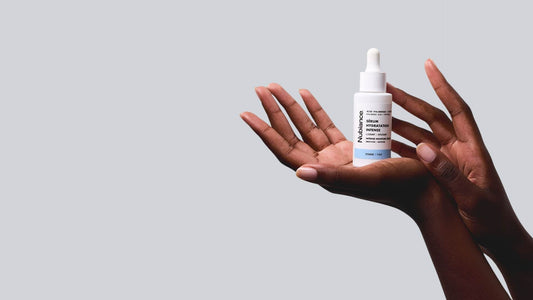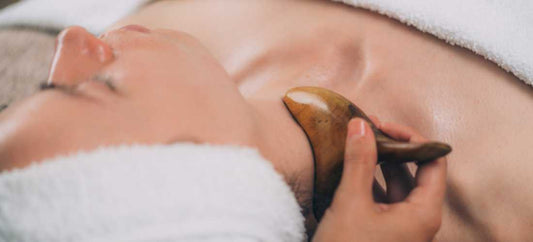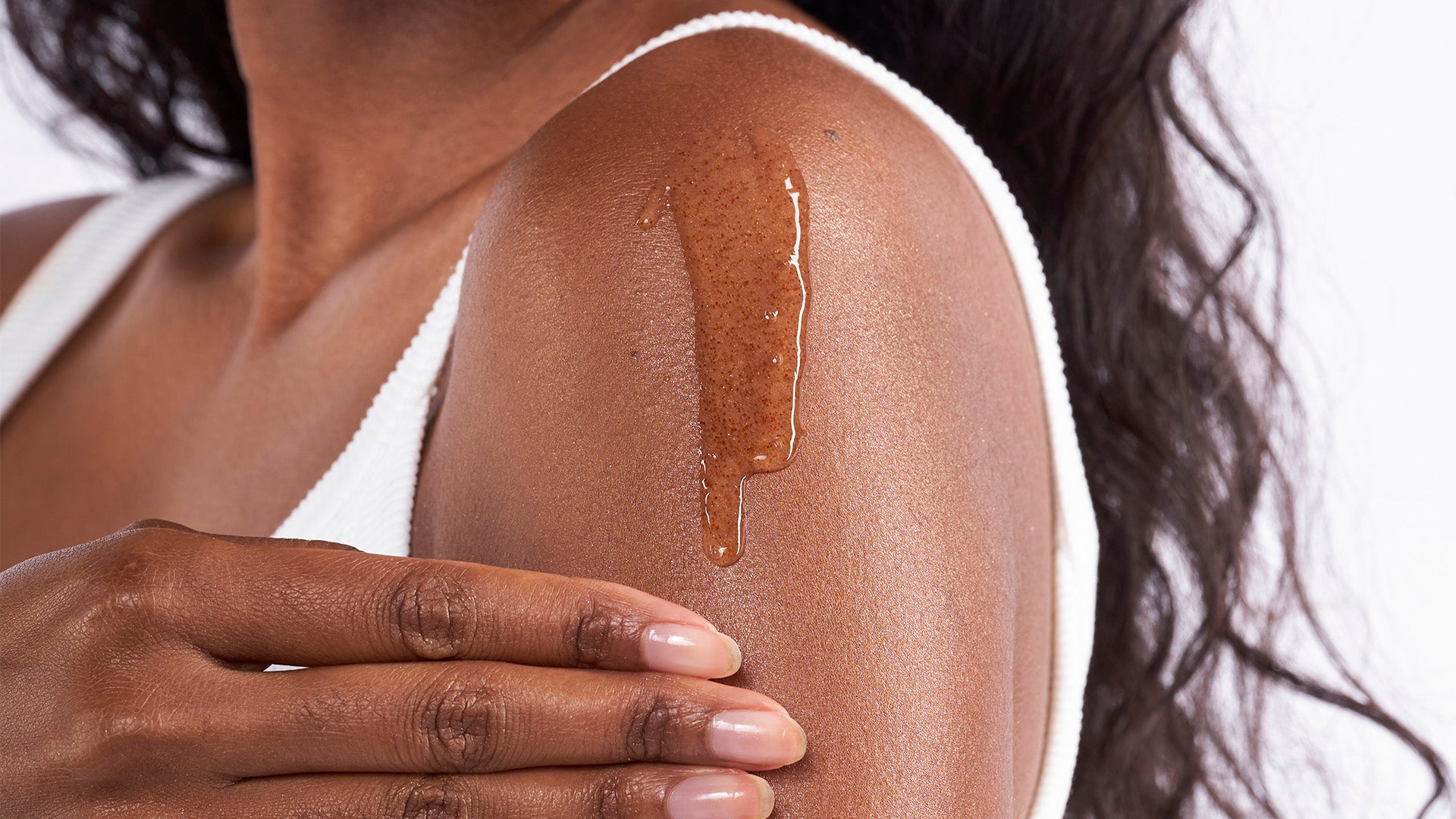
Skin depigmentation: The essentials to know
Partager
How to react to white skin spots and understand the origins of skin depigmentation? What are the anti-dark spots treatments to favor to maintain optimal pigmentation?
Can we restore the homogeneity of the complexion through the use of dermocosmetic products? Faced with these many concerns, the Nubiance team explores these questions in depth, providing informed answers to guide you in your quest for healthy, glowing skin.
What is skin depigmentation?
The natural color of the skin is determined by the presence of the pigment called “melanin”. We notice a greater production of melanin in black, dark and mixed skin. This increased production of melanin sometimes manifests itself in a localized manner, creating the phenomenon known as hyperpigmentation. In this case, a specific area shows more intense coloring, brown spots. In general, these spots are located on part of the face, the neckline or even the hands.
When it comes to skin depigmentation , the opposite of the process occurs. There is a decrease in melanin production, mainly attributable to the deterioration of the cells responsible for the synthesis of this pigment, which leads to dysfunction. This melanin deficiency manifests itself by discoloration or depigmentation of the skin in certain areas , thus creating a marked contrast with the rest of the epidermis.
In the complete absence of pigmentation, these areas can take on a completely white hue. This phenomenon is identified as vitiligo, a condition characterized by loss of pigmentation due to dysfunction of melanin-producing cells. Understanding these mechanisms offers important perspectives for the study and management of skin pigment variations.
Also, do not hesitate to read: Nubiance anti-dark spots face cream: The key to a luminous complexion

Skin depigmentation: The causes
As mentioned previously, skin depigmentation is manifested by an alteration in the color of the skin, resulting in a reduction, or even a total absence, of melanin in certain areas. The origins of this phenomenon can be diverse, sometimes linked to genetic factors, but most often of acquired origin, such as:
- Prolonged exposure to the sun,
- Dermatological diseases or autoimmune diseases,
- Certain medical treatments,
- Intense stress,
- An emotional shock
In some people experiencing skin depigmentation , the impact goes beyond the aesthetic dimension, possibly signaling the presence of other underlying anomalies. Depending on the nature of the causes identified, it is sometimes possible to reduce depigmentation of the skin through targeted anti-dark spot treatments or the use of suitable dermocosmetic products. In more complex cases, requiring in-depth attention, medical treatment is recommended.
Thus, the diversity of factors involved in skin depigmentation highlights the importance of adopting a holistic approach, combining specialized skin care, appropriate dermocosmetic products and medical advice, depending on the severity of the situation.
To get as much information as possible: The effects of stress on the skin
Depigmentation: identify risks and adopt preventive measures
Two major types of skin depigmentation
Skin depigmentation encompasses two major categories of skin conditions:
- Congenital skin depigmentation ( present from birth)
- Acquired skin depigmentation ( occurring throughout life)
The first concerns genetic diseases requiring dermatological consultation, as they may be associated with other medical problems. Careful evaluation by a dermatologist is essential to understanding and managing these conditions, which can vary in severity and complexity.
The depigmentation of the acquired skin, for its part, results in the appearance of more or less white plaques or spots .
In some cases, it can even lead to complete depigmentation, as observed in the case of post-inflammatory hypopigmentation, usually manifesting as lighter patches, although not completely white. Common conditions associated with acquired skin depigmentation include achromic scathes or eczematids, psoriasis which can cause light spots on dark or black skin, and vitiligo.
The diversity of these conditions highlights the importance of a personalized approach to diagnosis and management, highlighting the crucial role of the dermatologist in the management of skin depigmentation.
Also read: Korean layering: 10 steps to follow

It is natural to question which individuals are most likely to present specific skin risks, especially skin depigmentation . In response to this question, it is essential to emphasize that people with darker complexions are at greater risk of developing pigmentary changes, whether hyperpigmentation or post-inflammatory hypopigmentation.
This observation highlights the influence of skin pigmentation on the propensity for these skin manifestations. When it comes to vitiligo , it is interesting to note that all individuals, regardless of gender and origin, are equally exposed to this particular dermatological condition. Thus, the predisposition to pigmentary alterations appears to be influenced by factors such as the type of skin pigmentation, highlighting the importance of understanding the diversity of skin responses depending on these characteristics.
Also, do not hesitate to read: What are the effects of heat on the skin?
Beyond the appearance of white marks on the skin, certain manifestations of skin depigmentation are not accompanied by any other apparent symptoms. This dermatological problem, although not contagious and not physically painful for affected individuals, results from the destruction of melanocytes, thus depriving depigmented areas of their protective barrier function.
This situation increases the vulnerability of these areas to the sun , thus increasing the risk of sunburn and skin cancer. It therefore becomes imperative to adopt increased vigilance and implement appropriate skin care , in particular the regular application of sunscreen with a protection factor of at least 30. Follow the fundamental rules of sun protection is essential whenever outdoor exposure is planned.
However, despite the non-painful aspect of skin depigmentation , its impact goes beyond the physical aspects. The destruction of melanocytes can have significant psychological repercussions, causing a reduction in self-esteem and emotional suffering.
Faced with this reality, psychological assistance can prove beneficial, providing the support necessary to deal with the emotional challenges associated with this skin concern. The combination of increased vigilance regarding the sun, a choice of dermocosmetic products in accordance with your skin type, and psychological support can help improve the quality of life of people affected by skin depigmentation .
Also read: Heat rash in adults: causes and treatment

To maintain the health and evenness of your skin , the judicious selection of skin care products is of crucial importance. When going out, keep in mind the regular application of a quality sunscreen, particularly on the face and areas of the body exposed to UV rays. Currently, the market offers a wide range of dermocosmetic products, ranging from moisturizers to nourishing treatments, which incorporate protective filters to defend the skin against the harmful effects of the sun.
Although there are not yet specific solutions to prevent skin depigmentation , it remains essential to protect yourself against the sun's rays. This precaution is all the more relevant because depigmented skin is more fragile and no longer benefits from the natural protective barrier against UV rays. Thus, in addition to the use of suitable skin care, the adoption of preventive measures, such as the regular application of sunscreen , proves crucial to maintain the health and integrity of the skin on the face. to environmental attacks.
Find out more details here: Sunburn on black skin: causes, symptoms and solutions
To preserve the health and radiance of your skin throughout the day, consider incorporating HRB-3 Anti-Dark Spot Day Treatment into your skincare routine. This product presents a doubly beneficial approach, acting in depth on hyperpigmentation and depigmentation spots on the skin , while ensuring optimal sun protection with an SPF30 index. This unique combination promises a robust defense against the harmful attacks of UV rays, thus preserving the vitality of your skin.
The powerful action of this Nubiance treatment manifests itself quickly, offering visible results within a few weeks of regular use. Thanks to its advanced formula, your skin will radiate a revitalized radiance, demonstrating the effectiveness of this product in the fight against skin spots, while strengthening the protective barrier against the harmful effects of the sun.
Read also: Hyperpigmentation intimate area: how to lighten the bikini line?

A good skin care routine at night
To optimize your skin care during the night, use HRB-3 Anti-Dark Spot Night Treatment, a solution that acts discreetly during your rest period to reduce skin spots. This innovative formulation incorporates restorative and soothing components, stimulating the skin's natural regeneration process during sleep. By acting as an attentive partner during the night, this anti-dark spot treatment is committed to actively supporting the beauty of your skin.
Its promise lies in a fresh and radiant complexion upon waking up, demonstrating the benefits of a night of targeted care. Equipped with caring and restorative properties, Nubiance night care is positioned as an essential ally in your nighttime beauty routine. By incorporating this product into your before-bed ritual, you provide your skin with a delicate regenerating experience, contributing to a visibly revitalized complexion.
Integrate Nubiance dermocosmetic treatments into your daily routine and discover visibly more luminous and radiant skin over time!




